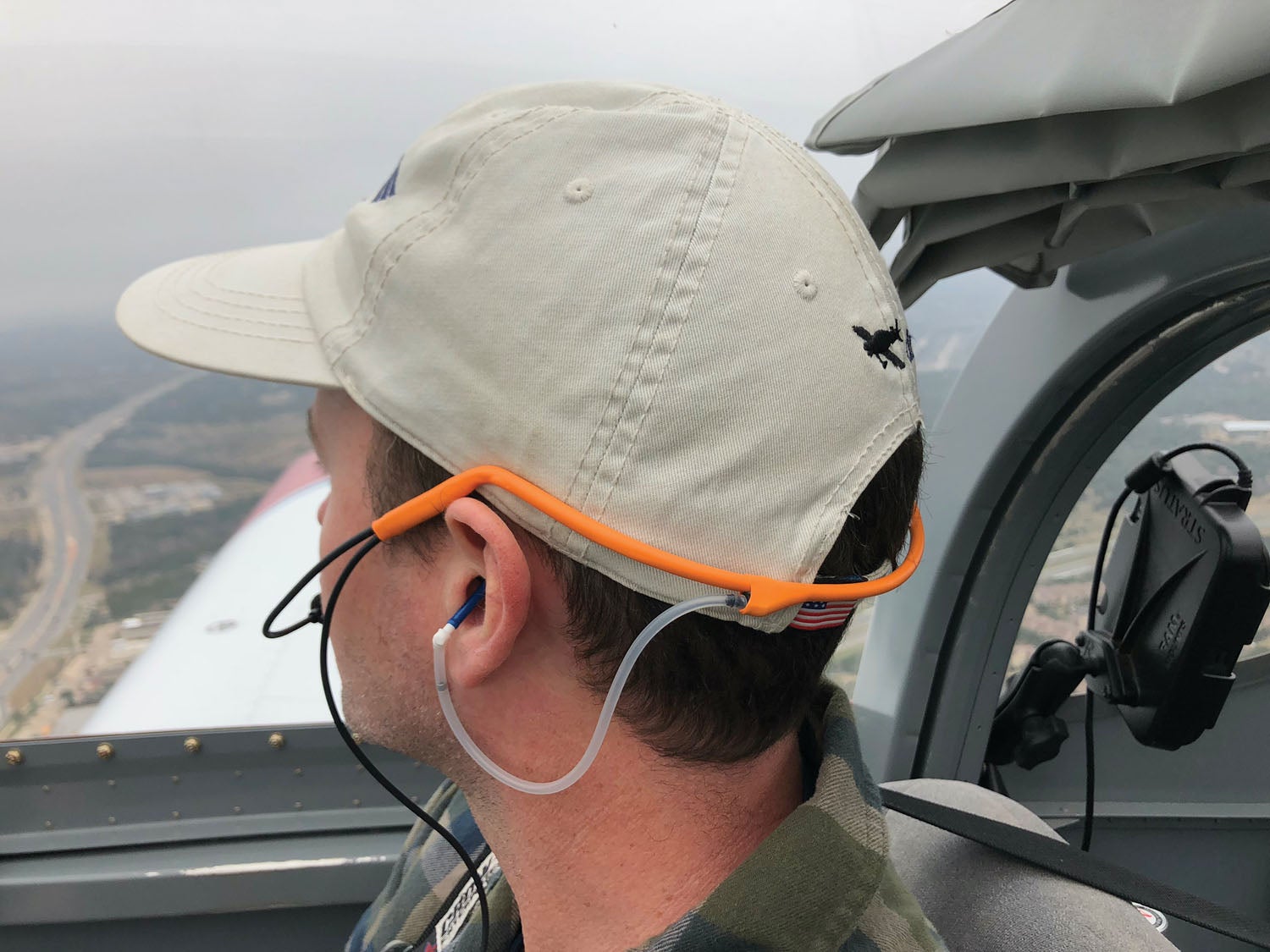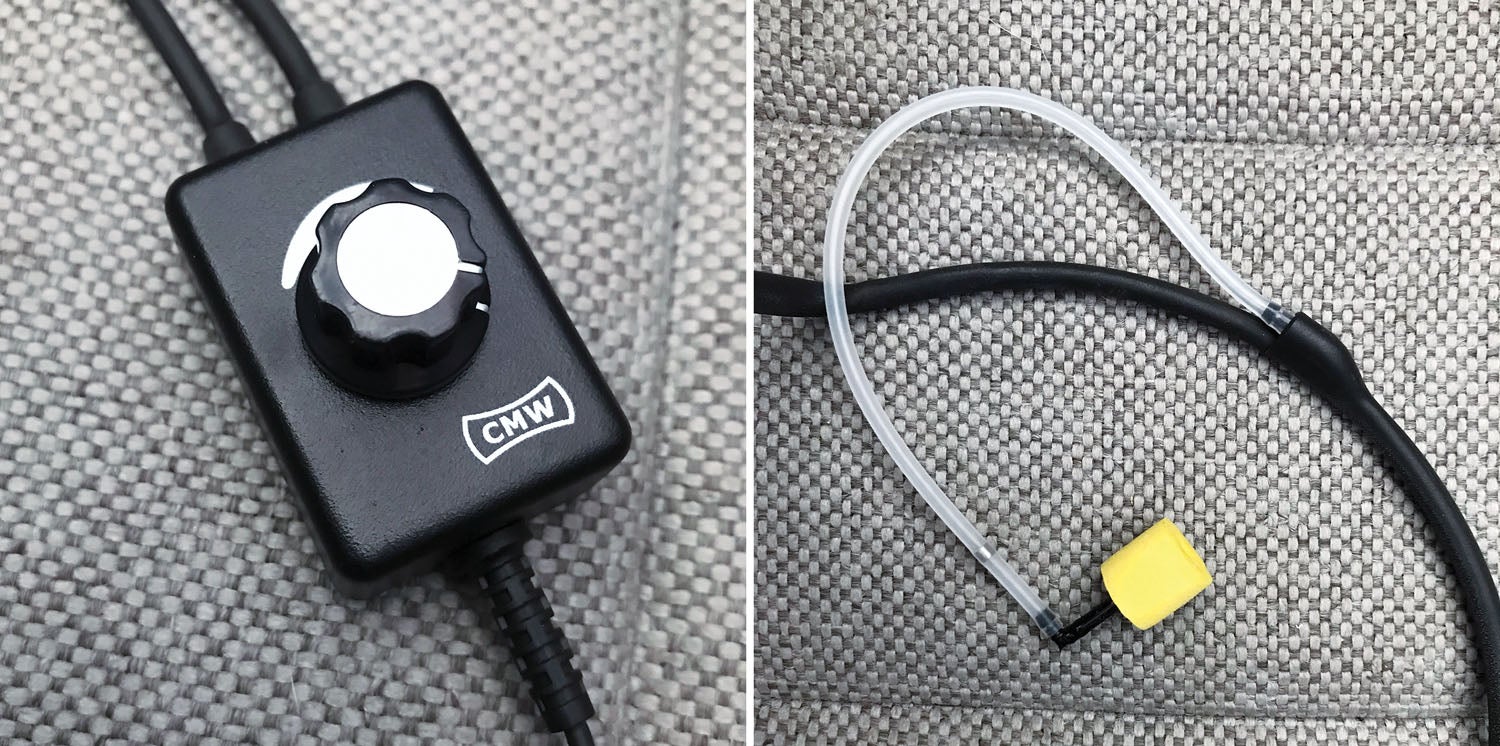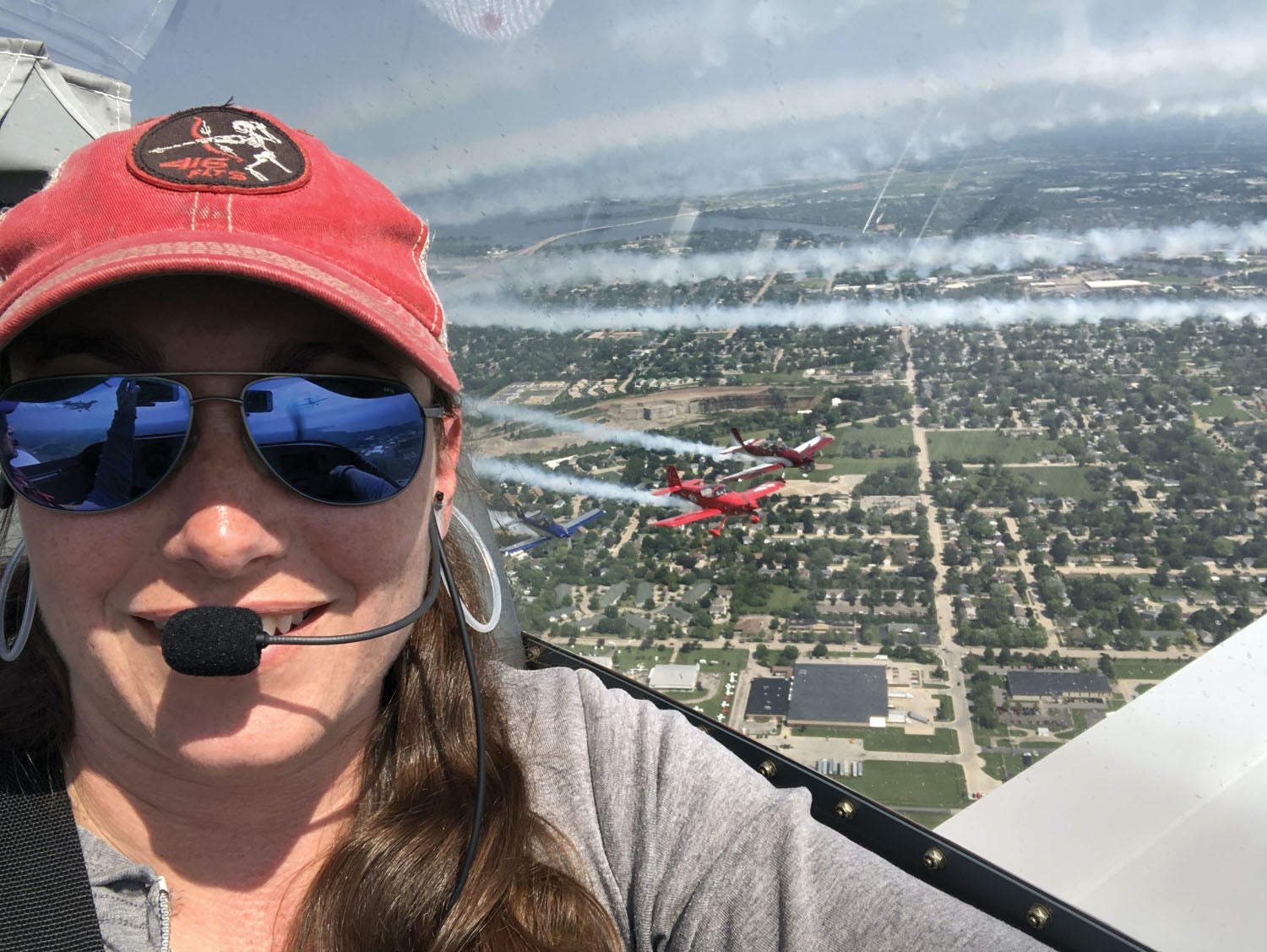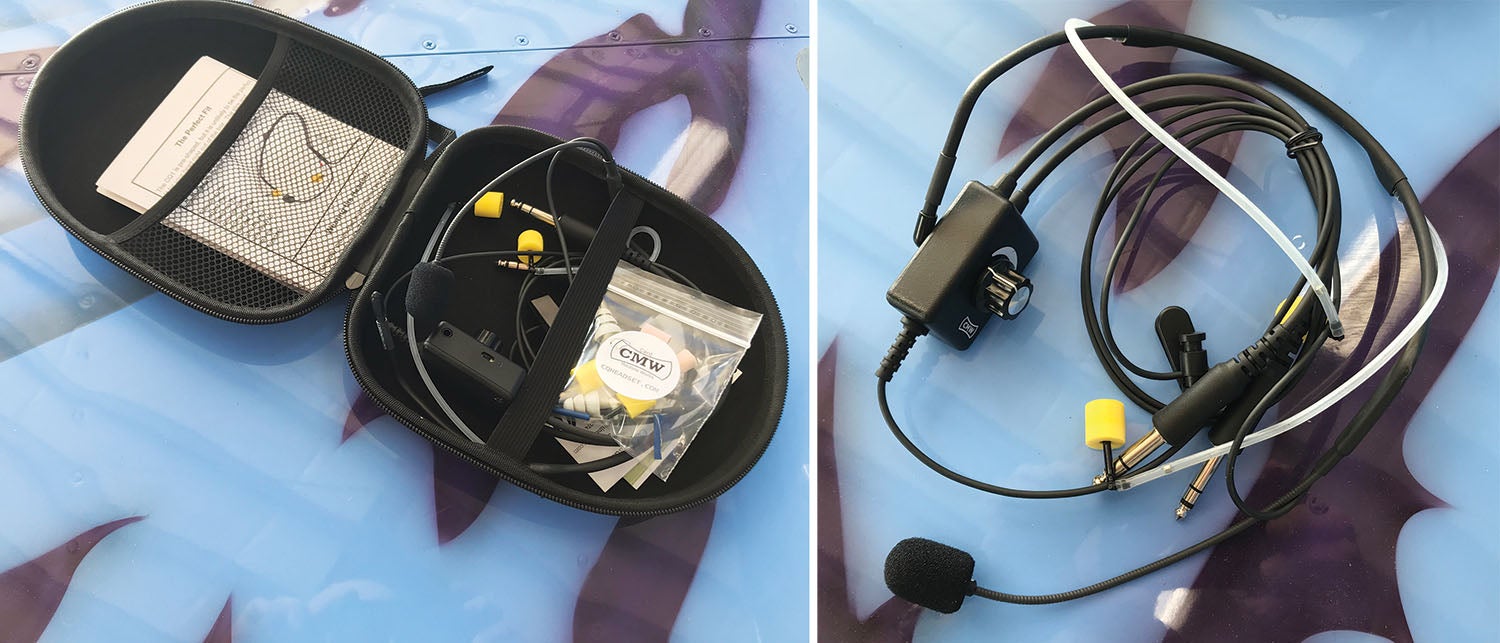 There’s a new lightweight headset in town, one developed by pilots for pilots—specifically, Experimental pilots! The CQ1 is an evolutionary step in the development of the ultra-lightweight, in-ear headset that has become popular in the Experimental world because of the freedom you get without big bunny ears—and in bubble canopies, it makes it easier to wear a boonie hat to keep the sun from burning your ears off. The CQ1 headset by Card Machine Works incorporates lessons learned from many who have been using other brands of super-lightweights and have talked around the campfires about how they could be improved.
There’s a new lightweight headset in town, one developed by pilots for pilots—specifically, Experimental pilots! The CQ1 is an evolutionary step in the development of the ultra-lightweight, in-ear headset that has become popular in the Experimental world because of the freedom you get without big bunny ears—and in bubble canopies, it makes it easier to wear a boonie hat to keep the sun from burning your ears off. The CQ1 headset by Card Machine Works incorporates lessons learned from many who have been using other brands of super-lightweights and have talked around the campfires about how they could be improved.
Scott and Tanya Card sat at a lot of those campfires, and as users of a couple of different brands of lightweight headsets, they understood the comments and criticisms. And they felt that they could build a better mousetrap. They introduced the CQ1 quietly within the RV community several years ago, and those who used it gave it rave reviews. We got a chance to put one into our regular “rotation” of headsets and have to agree—this is a lightweight, in-ear headset that has it right.
A Brief History of Headsets
I have been a headset wearer ever since I put on an old pair of Telex clampers that were connected to a “portable” radio (the size of a small briefcase) that we threw into the J-3 in which I learned to fly. We didn’t use it very often—only on the weekends, when our field’s tower was open—and when we did, we didn’t know if we were actually receiving or transmitting. But at least we looked like Ernie Gann with those ratty-looking earpieces and an old handheld mike.
I later moved on to wear headsets through a career in the space program, wearing everything from lightweight StarSets to Bose noise-cancellers to the white and black “Snoopy cap” we wore inside helmets. So I have some pretty strong ideas about what I like in a headset. The search for the perfect headset has led me to a place where I have almost a dozen bouncing around in various boxes and hanging on hooks in the hangar. If it’s on a hook, it’s usable; if it’s in a box, it failed to rise to minimum acceptable standards.
Define Perfection
If you really think about it, the perfect headset is hard to define because, frankly, it isn’t a “thing” so much as it is an idea—and that idea is actually nothing at all. What we’d like in a headset is something that delivers crisp, clear communications (in both directions) while giving us good hearing protection (while still allowing enough ambient sound so that we know what our airplane is doing) and doesn’t give us any discomfort at all. In fact, the perfect headset should feel like nothing at all.
Headset design has come a long way since the earliest carbon-element headphones that sat over the ear but provided no noise protection, coupled with a handheld microphone (because no one could make a microphone small enough) or a throat mic (which didn’t give very good audio). Then the passive-noise-canceling headsets, where the gold standard for many years was David Clark—green and rugged. But, oh, the clamping pressure on the head!
Along came active noise canceling—a fancy technology that listens to the ambient noise and uses the speaker element to cancel it outright at your ear. Conceptually an attractive solution, it is sometimes amazing that it actually works—and works well. But it still has a set of cups on top of or over the ears and a band across the top of the head (in most cases), and that makes it hard to wear that boonie hat.
So along came the “in-ear” headset with a lightweight band around the back of the head and soft foam or rubber earpieces that blocked out ambient noise. There have always been cheap versions of this design, but two brands of quality headsets (the QT Halo and the Clarity Aloft) have now been around for well over a decade. Their designs have remained pretty much the same over those years, with some complaints about the ability of the mic to stay in position and some questions on durability related to the positions of speaker elements (which are different on those two products).

Enter the CQ1
The CQ1 was designed by pilots who had extensive experience with both the Halo and the Clarity Aloft, and specifically targeted the issues they had personally experienced with the designs. The CQ addresses the issue of microphone motion, and the quality of the audio was upped to the point that it sounds like you’re sitting in a quiet jet cockpit enjoying a soft conversation with pilots and controllers who might or might not be in other airplanes or control rooms—it’s just conversation.

Our stable of headsets includes both of the previously mentioned quality lightweights, so it’s easy to make direct comparisons. Out of the box, the CQ1 shows quality construction, and the headband/microphone support seems beefier than the other lightweights. Once I put it on, this proved to be the case—the microphone stayed exactly where I put it.
Although it fit my head just the way it arrived, the Cards say that it is easy to rebend the portion of the band that wraps around the back of the head to accommodate individual wearers. My wife found that the band sort of stayed away from the back of her head, which made the microphone a little less stable. Rebending the headband to make it sit more closely would solve this, according to Tanya Card, and she was right.
The quality of the build extends to another complaint people have about other lightweights—the control box. The Cards have built a nice small box that just seems to work. It has a single volume knob that is solid and allows volume adjustment without skips or bad spots in its range of travel. I have experienced problems with the “volume box” on other headsets, and it is frustrating to have dead spots on either the left or right (or both) channels so that you can only set it either too loud or too soft. Not a problem so far with the CQ, and speaking with users who have had a CQ for many hours, it doesn’t seem to be a problem for them either.

The Sound of Quality
I am of the opinion that a headset is only as good as it sounds—to others and to you—and the CQ does an excellent job in bringing living-room quality sound to the cockpit. The speaker elements are mounted to the headset band, and small surgical rubber tubes go from there to the earpiece in each ear. I like this design because the speaker elements are fairly well protected against abuse by the wearer. In any case, the Cards have chosen excellent speaker drivers, and the sound is full and clear. The microphone is also quite clear and not spiky in its sound—it is all clear and understandable, as mentioned before. It also stays right where you put it and doesn’t move around with G’s or looking around for targets…er traffic.
But what about active noise canceling (ANC)? Isn’t that important? I have seen studies that show that a passive headset with well-fit foam or rubber earbuds can actually protect your hearing almost (or just) as well. If you’re flying something that routinely puts 120 dB of sound at your eardrums, it might be important to go for the maximum hearing protection you can get—ANC plus foam earplugs. But for the average RV or bush plane with a Lycoming spinning a prop up front, I find that the trade-off of having a lightweight headset is worth giving up my ANC ear cups. I like having the ANC headsets more because of the convenience of pulling them on and off when operating a bush plane, and they can be easier for a passenger to use—but for all-day flying in an RV, I will forgo the ANC and pick the lightweight every time.

Finally, the issue of having “something in your ear” always comes up when talking about lightweight headsets—and yes, it is something that either works for you or it doesn’t. Anecdotally, just asking around the campsites at AirVenture, I have found that most people can tolerate foam earplugs fairly well, and that is what you are wearing with a lightweight headset. Yes, there are folks who simply can’t get used to them, but if you try a lightweight and don’t like the foamy in your ear at first, try to give it a couple of hours before giving up. Most people find that after that time, they no longer know they have them in, and the lightweight becomes a favorite ever after.
I spent most of my life wearing a Plantronics StarSet while tethered to a console in a control center and got used to having good quality sound no matter if a person was talking from a few feet away, from a communications station a few thousand miles distant—or from a spacecraft on the other side of a planet. The CQ1 gives me this same experience. If you’ve got good radios and a good audio panel, it is a great match.
For more information, contact:
Card Machine Works
www.cqheadset.com
info@cardmachineworks.com
737-529-8074
Photos: Paul Dye and Courtesy of Card Machine Works.













